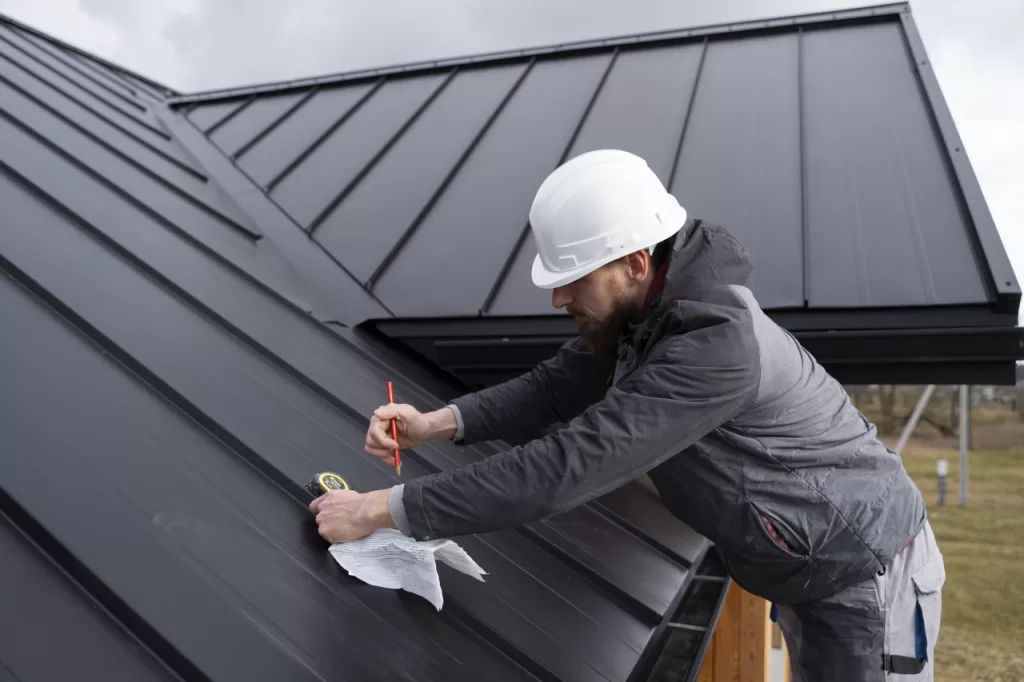
Roof repairs are an essential part of maintaining the integrity and longevity of your home. While some repairs may require professional help, there are several tasks that you can tackle on your own if you're a beginner in the world of DIY roof repairs. To help you get started, we have compiled a list of top tips and guidelines to follow when attempting to repair your roof yourself. Remember, safety should always be your top priority when working on your roof, so make sure to take all necessary precautions before getting started.
1. Assess the Damage
Before you start any DIY roof repair project, it's crucial to assess the extent of the damage and determine whether you can handle the repairs on your own. Here are some steps to help you evaluate the situation:
- Inspect your roof for missing, cracked, or damaged shingles.
- Check for signs of water damage or leaks in your attic.
- Look for sagging areas or signs of wear and tear on the roof.
Tools You Might Need:
- Ladder
- Flashlight
- Binoculars
2. Gather the Necessary Supplies
Once you have assessed the damage and are confident in your ability to handle the repairs, the next step is to gather all the supplies you will need. Here is a list of essential items for most DIY roof repair projects:
- Roofing cement or sealant
- Replacement shingles
- Roofing nails
- Roofing tape or membrane
- Roofing tar
- Safety gloves and goggles
- Roofing hammer or nail gun
Important Note:
Make sure to purchase high-quality materials to ensure the longevity and effectiveness of your DIY roof repairs.
3. Fixing Leaks and Damaged Shingles
One of the most common DIY roof repairs involves fixing leaks and replacing damaged shingles. Here are some steps to help you tackle these tasks:
- Locate the source of the leak by inspecting the attic for water stains.
- Replace any missing or damaged shingles by carefully removing the old ones and securing the new ones in place.
- Apply roofing cement or sealant around the edges of the new shingles to prevent leaks.
- For small leaks, use roofing tape or membrane to seal the area and prevent further damage.
Pro Tip:
When replacing shingles, make sure to match the color and style of the existing shingles to maintain a uniform and cohesive look.
4. Cleaning and Maintaining Your Roof
Regular cleaning and maintenance are essential to prolonging the lifespan of your roof and preventing costly repairs down the line. Here are some tips for cleaning and maintaining your roof:
- Remove debris such as leaves, branches, and dirt from your roof regularly to prevent clogs and water damage.
- Trim overhanging branches to prevent damage from falling limbs and leaves.
- Clean your gutters and downspouts to ensure proper drainage and prevent water buildup on your roof.
- Inspect your roof for signs of wear and tear, and address any issues promptly to avoid costly repairs.
Safety Reminder:
Be cautious when working on a roof, especially when using a ladder or climbing to heights. If you're unsure or uncomfortable with the task, consider hiring a professional roofer instead.
5. Knowing When to Call a Professional
While DIY roof repairs can save you money and provide a sense of accomplishment, there are certain situations where it's best to leave the job to the professionals. Here are some signs that indicate you should call a professional roofer:
- Extensive or severe damage to your roof
- Structural issues or sagging areas that require immediate attention
- Leaks that persist despite attempted repairs
- Roofing materials that are beyond your skill level to repair or replace
Final Thoughts:
When it comes to DIY roof repairs, safety should always be your top priority. If you're uncertain about your ability to handle a repair or encounter a problem beyond your skill level, don't hesitate to call a professional roofer for assistance. By following the tips and guidelines outlined in this beginner's guide, you can tackle common roof repairs with confidence and maintain the integrity of your home for years to come.